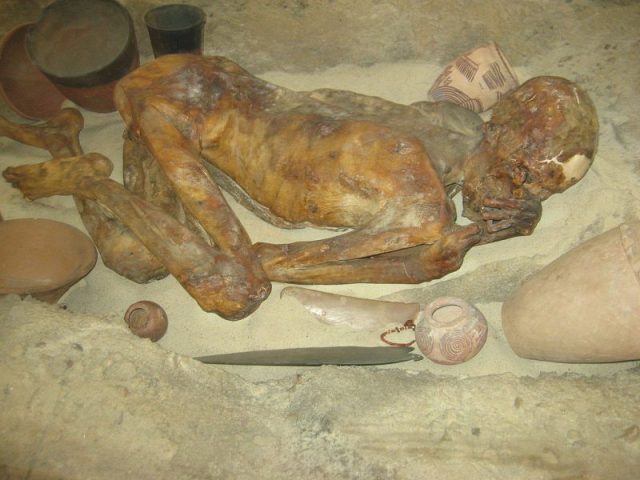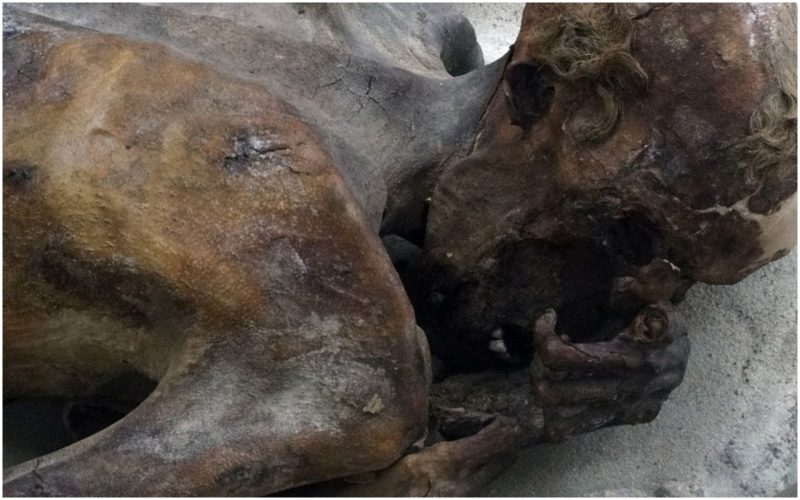People have inked their skin long before the practice entered modern-day culture, and the latest findings concerning two mummies housed in the British Museum is the ultimate proof how old tattooing really is. New research, making use of advanced CT scanning, infrared imaging, and radiocarbon dating methods, has revealed what the naked eye couldn’t perceive.
The mummified remains are known as the Gebelein mummies, a world-renowned attraction inside the quarters of the British Museum, and now they are set to disrupt the accepted narrative of the history of tattooing. The latest inspection of the remains has shown they still wear the traces of figural (meaning figurative, in the shape of humans or animals) tattoos they had done on their bodies some point between 3351 and 3017 B.C. The tattoos included shapes of animals and, given their age, they are now counted as the world’s oldest figural tattoos. The research has been released in the Journal of Archaeological Science.
One of the mummies is female, and the other one is male. The first appears to have a sequence of four tiny S-like motifs, while with the latter a bull and a sheep were found on the upper part of the arm. These human remains were retrieved over a century ago from Ancient Egyptian tombs, at a location close to the city of Luxor. For decades the mummies had been displayed at the British Museum, but apparently, they had not been thoroughly inspected.

Experts needed considerable time to interpret the depictions. It was a challenge to provide an accurate explanation of the tattoos that the female sported; however, the motifs may relate to ritual dances that would have taken place in the Ancient Egyptian days, in pre-dynastic times. The woman’s tattoos could have possibly been done to mark status, or that she was brave or perhaps possessed some knowledge of magic, according to the Mail Online.
It was easier to reach conclusions on the male tattoos and the symbolism of the specific animals depicted. The two images that adorn the upper arm and shoulder of the Gebelein man would have likely denoted virility. This interpretation may prove to be correct when taking into account that throughout much of the ancient world, figures such as bulls were associated with male power, masculinity, or dominance. A bone or copper-made needle could have been used for creating the tattoos.
More recent research from a couple of years ago has also shown that the Gebelein male mummy suffered a horrible death from stabbing, at quite a young age, between 18 and 21. He was also ginger-haired, researchers believe. While various aspects of the identity of the mummies have been revealed in the past, researchers missed inspecting subtle dark marks on their bodies. Under regular light, not much is revealed, and the ancient tattoos were dismissed as darkened smears.
The significance of the smears was proven after the mummified woman and man were subjected to more careful examination as part of a new conservation and research effort. The concrete images revealed by the latest scanning match some similar forms and objects found in ritual representations on ceramics and dated to the same period. More importantly, the findings change the timeline when figurative tattooing commenced in Africa and the ancient world. These tattoos extend the timeline back an additional thousand years. The Gebelein female mummy now counts as the earliest-known mummy identified to have a figural tattoo, too.
Her male counterpart joins the company of another mummy contemporary that sported some of the world’s earliest known tattoos. Known as Ötzi the Iceman, this mummy was discovered in a border area between Italy and Austria in 1991. Analysis of Ötzi’s body has shown that his naturally preserved body had dozens of tattoos, but reportedly all were non-figural black lines. His remains were dated to be some 5,200 years old.
Back to the Gebelein mummies, they now “push back the evidence for tattooing in Africa by a millennium,” said Daniel Antoine, one of the leaders of the research effort and a British Museum Curator of Physical Anthropology. In a statement for BBC News, he said that “only now are we gaining new insights into the lives of these remarkably preserved individuals.”
Historically, tattoos have been used for a number of different cultural reasons. Some people would have used them as magical protection or for healing. Others would have used them to clarify a certain status in their community or to denote a religious belief.
According to the Smithsonian on the history of tattooing, for Ancient Egypt, some of the assumptions have been that tattooing was something that only the women of the society practiced. Usually, the older women took care to make tattoos for the younger women.
With the latest research in mind, such assumptions no longer hold true.
